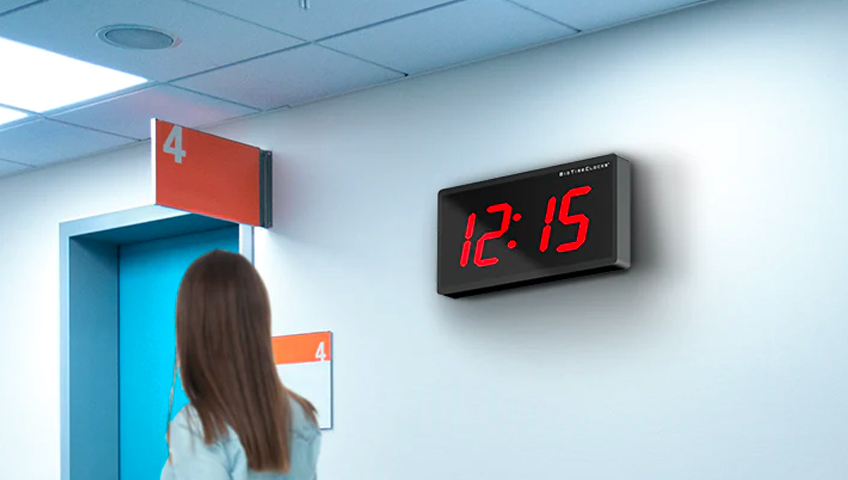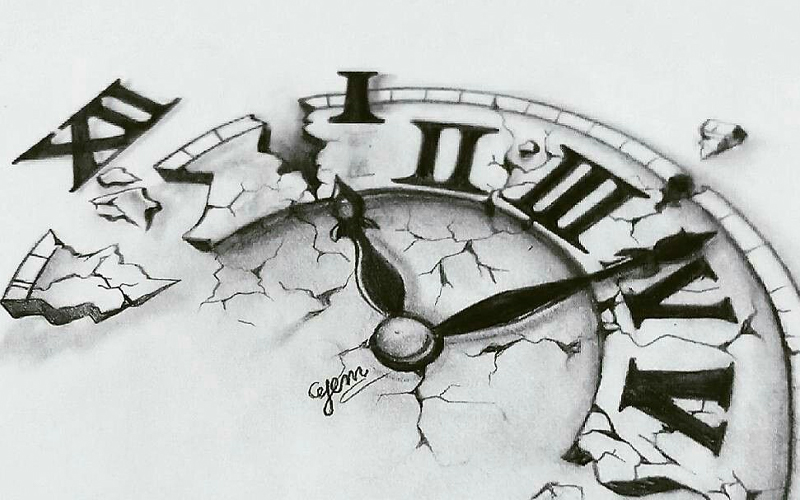How a lot time do you spend making espresso within the morning, making the mattress, brushing your tooth – heck, how about placing in your socks? Wait, do not reply that query; it is best not to consider what number of hours of your life are consumed with mundane duties.
The fact is that whereas we pursue significant lives, a lot of our days are used up by chores that we might automate if we might, releasing up extra time for the issues we truly care about. This interprets to work, too.
For facility managers, there are few elements of routine upkeep that may be placed on autopilot, however adjusting the clocks is a kind of. Right here, we’ll calculate simply how a lot time it’s important to spend ensuring your clocks are on tempo, time that you can get again with a synchronized clock system.
Why Daylight Saving Time Really Prices You Time
Daylight Saving Time (DST) is a practice where clocks are set forward by one hour during warmer months to extend evening daylight. While the idea behind DST is to make better use of natural daylight and potentially save energy, some argue that it may come with certain drawbacks. Here are reasons why some people believe Daylight Saving Time may “cost” time:
- Disruption to Sleep Patterns:
- Adjusting the clock forward by one hour can disrupt people’s sleep patterns. Losing an hour of sleep may lead to sleep deprivation and fatigue, affecting productivity and well-being.
- Circadian Rhythm Impact:
- The sudden shift in time can affect the body’s circadian rhythm, the natural internal clock that regulates the sleep-wake cycle. It may take some time for individuals to adjust to the new schedule.
- Productivity and Concentration:
- Sleep disturbances caused by the time change can impact productivity and concentration levels. Studies have shown an increase in workplace accidents and a temporary decrease in productivity following the start of DST.
- Health Concerns:
- Some research suggests that the abrupt change in time may have health implications, including an increase in the number of heart attacks, strokes, and other health issues in the days immediately following the time change.
- Inefficiency and Confusion:
- The semi-annual practice of changing the clocks can lead to inefficiencies and confusion. People may forget to adjust their clocks, leading to missed appointments or being early or late for scheduled events.
- Technology Adjustments:
- The need to adjust various devices, such as clocks, timers, and thermostats, can be seen as an inconvenience. While many devices now automatically adjust, there can still be instances where manual adjustments are necessary.
- Lack of Energy Savings Evidence:
- Some critics argue that the energy-saving benefits of DST are minimal or inconclusive. The original purpose of DST was to reduce energy consumption, particularly during wartime, but studies have produced mixed results regarding its effectiveness in this regard.
- Global Coordination Challenges:
- DST practices vary globally, and not all regions observe it. This lack of uniformity can create challenges for international business, travel, and communication.
It’s essential to note that opinions on Daylight Saving Time can vary, and some people may appreciate the extended daylight hours during the warmer months. The debate over the merits and drawbacks of DST continues, and discussions about potential changes to its implementation or elimination are ongoing in various regions.
Right here’s the equation:
5 minutes x 100 clocks x 2 DST = 1000 minutes per yr
1000 minutes ÷ 60 = 16 hours
If you wish to calculate how a lot time your facility can save, plug in your info within the equation beneath. Have in mind the various factors that may have an effect on the pace of correcting the clock such because the expertise of the individual liable for adjusting them, the time it takes to stroll to every room, if the clock is positioned someplace that’s solely accessible by ladder, and the provision of the room. Additionally, DST happens twice a yr so make sure that to multiply your outcomes by 2.
[average amount of time to change one clock] x [number of clocks] x 2 DST = [minutes per year it takes to adjust the clocks]
What Occurs When Clocks Go Rogue?
Perhaps you are high quality with dedicating 16-plus work hours a yr to maintain up with the remainder of the world, however updating for DST is not the one factor it’s important to fear about with regards to adjusting your clocks.
Quartz clocks, the commonest kind, hold their time primarily based on the crystal’s tiny vibrations. These vibrations aren’t good, although. The quartz vibrations will likely be barely completely different in every clock, which means a set of impartial clocks will develop into out of sync.
As your clocks drift aside, you may not discover it at first. However over an extended sufficient interval, these variations will develop into apparent.
The Price of Falling Off the Tempo
If you do not have synchronized clocks, then you definately’ll must put effort into ensuring your clocks keep in sync, that’s in case you worth being on a schedule. Maybe you may develop a routine to verify the clocks, or possibly you may reply to complaints from employees members as they arrive in. Both means, you are spending extra assets to ensure everyone seems to be on time.
And that is in case you’re in a position to sustain with the mandatory changes within the first place. The associated fee is even larger in case you let your clocks drift up to now aside that conferences, appointments, and lessons begin late.
Synchronization by American Time
Synchronization by American Time typically refers to the process of ensuring that all clocks within a given system display the same accurate time. American Time is a company that provides various timekeeping solutions, including synchronized clock systems for organizations and institutions. Here’s an overview of how synchronization by American Time may work:
American Time systems often use the Network Time Protocol (NTP) for synchronization. NTP is a protocol that allows devices to synchronize their clocks over a network.
In a synchronized clock system, there is typically a central master clock that serves as the authoritative time source. The master clock is responsible for providing accurate time information to all the clocks in the system.
- The master clock distributes precise time signals to all connected clocks in the system. This ensures that every clock is displaying the same accurate time.
American Time offers both wired and wireless clock systems. Wired systems use physical connections (e.g., Ethernet) to distribute time signals, while wireless systems use radio frequency (RF) signals for communication.
The frequency of time updates can be customized based on the specific needs of the organization. Some systems update time continuously, ensuring real-time accuracy, while others may update at regular intervals.
American Time systems often include automatic adjustments for Daylight Saving Time (DST). This feature ensures that the clocks automatically shift forward or backward when DST starts or ends.
Synchronized clock systems by American Time may integrate with other systems within an organization. This could include interfaces with security systems, communication systems, or other time-sensitive processes.
Reliable synchronization systems often include redundancy features. This means that even if one part of the system fails, there are backup measures in place to ensure continuous operation.
American Time provides customizable solutions to meet the specific requirements of different industries and organizations. This includes options for different clock types, designs, and features.
The central master clock allows for centralized control over the entire clock system. This can be particularly beneficial for organizations with multiple locations or buildings.
American Time offers maintenance and support services to ensure the ongoing reliability and performance of synchronized clock systems. This may include troubleshooting, software updates, and on-site assistance.
Synchronized clock systems by American Time are designed to comply with industry standards for timekeeping accuracy. This is especially important in sectors where precise timekeeping is critical.
In summary, synchronization by American Time involves the use of advanced technologies such as NTP to ensure that clocks in a system display accurate and synchronized time. This can be particularly important in environments where precise timekeeping is essential for operations and coordination.







